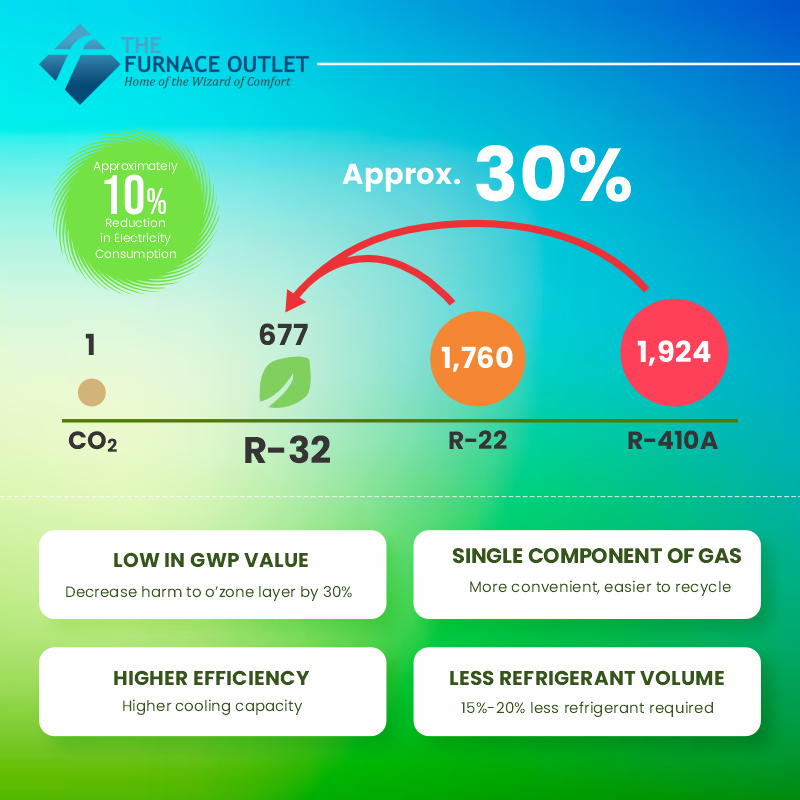In the ever-evolving landscape of HVAC (heating and air conditioning), change is a constant companion. One of the latest significant shifts in the industry is the transition from R410A to R32 refrigerant. As this change unfolds, it is crucial for consumers and professionals alike to understand the implications, particularly regarding the availability and pricing of R410A products.
Understanding the Change to R32 HVAC
R32 refrigerant, or difluoromethane, is becoming the preferred choice over R410A for several compelling reasons:
- Environmental Impact: R32 has a much lower Global Warming Potential (GWP) of 675, compared to R410A's GWP of 2088. This makes R32 a more environmentally friendly option, aligning with global efforts to reduce greenhouse gas emissions.
- Efficiency: R32 is known for its superior energy efficiency. It can carry heat more effectively than R410A, which translates to better performance and lower energy consumption for HVAC systems.
- Cost-Effectiveness: Despite initial setup costs, systems using R32 can be more cost-effective in the long run due to their higher efficiency and lower environmental taxes or fees associated with high-GWP refrigerants.
The Impact on R410A Availability
As manufacturers ramp up the production of R32-compatible systems, the stock of R410A products is beginning to dwindle. This shift is not just a simple replacement of one refrigerant with another; it represents a broader transformation in the market dynamics of the HVAC industry.
- Dwindling Stock: Many suppliers are reducing their inventory of R410A products in anticipation of the switch to R32. This means that consumers looking for R410A-compatible systems or replacement parts may find it increasingly challenging to source these items.
- Spotty Availability: The availability of R410A products is expected to become spotty, with certain areas of the country experiencing sell-outs and shortages. This regional disparity can be attributed to varying levels of demand, distribution networks, and the pace at which different markets adopt R32.
- Price Volatility: As the supply of R410A products decreases, prices may become more volatile. Consumers might see a rise in costs for R410A systems and components as they become scarcer, making it essential to plan purchases strategically.
Preparing for the Transition
Whether you are an HVAC professional or a homeowner planning an upgrade or maintenance, understanding this transition is key to making informed decisions. Here are some steps to consider:
- Plan Ahead: If you are considering purchasing an R410A system or need replacement parts, it may be wise to act sooner rather than later. Delaying purchases could result in higher costs and limited availability.
- Consider R32 Systems: Given the environmental and efficiency benefits of R32, it might be worth exploring R32-compatible systems. While the initial investment may be higher, the long-term savings and reduced environmental impact can be significant.
- Stay Informed: Keep up with industry news and updates from manufacturers and suppliers. Staying informed about the latest developments can help you navigate this transition smoothly and avoid potential pitfalls.
The shift from R410A to R32 refrigerant marks a significant step forward for the HVAC industry, aligning with global environmental goals and advancing technological efficiency. However, this transition also brings challenges, particularly regarding the availability and pricing of R410A products. By understanding these changes and planning accordingly, consumers and professionals can navigate this evolving landscape and make the most of the opportunities it presents.
As always, staying informed and proactive is the key to success in a dynamic industry like HVAC. Embrace the change, and you'll be well-positioned to benefit from the advancements that R32 brings to the table. If you’re looking for An R32 product in stock today we suggest the Amana 12,000 BTU PTAC.







